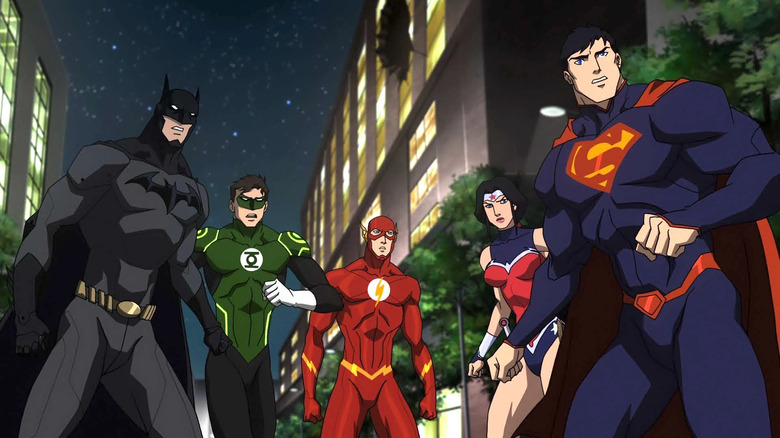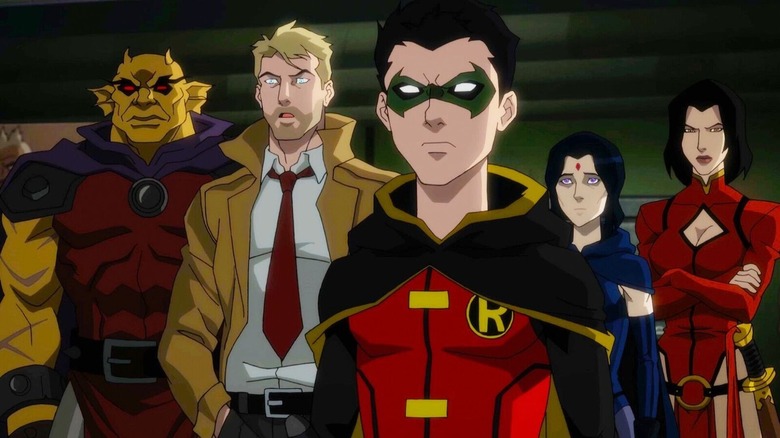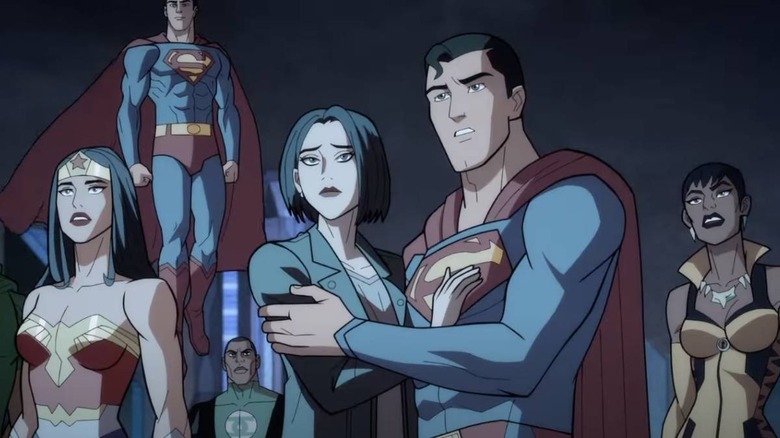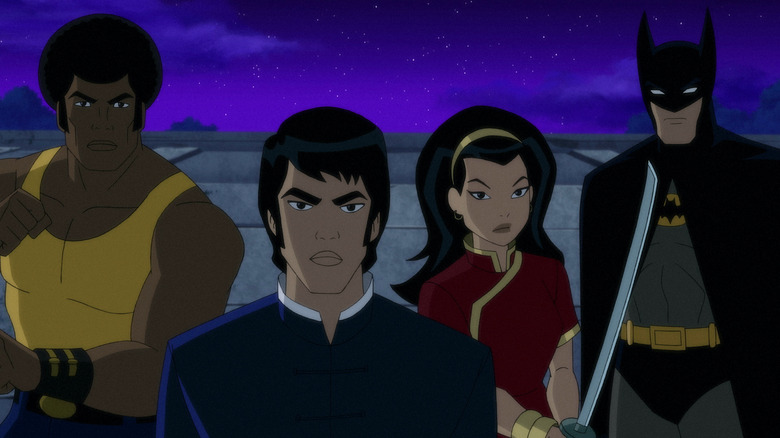The Correct Order To Watch The DC Universe Animated Original Movies
Though they've made a fraction of the box office of even the worst DC live-action movie, creatively the crown jewel of DC Comics adaptations lies in their animated movies. It's through animation that the potential of comic book adaptations really shines. Ever since "Superman: Doomsday" was released in 2007, we've had movies that faithfully adapt popular comics storylines (rather than just borrow the name for brand recognition and throw the rest away), original films with wild concepts, and even movies that build on continuity like the biggest cinematic universes.
This is one of the most interesting aspects of the DC animated movies, because there are two proper continuities, each building up characters and storylines and exploring giant crossovers in a way DC has not come even close to figuring out in live-action.
Given how little resources Warner Bros. have used to properly market this universe or make sure audiences are aware of its continuity, you would be forgiven for mistaking the DCAU for the Tomorrowverse or even the Timmverse. That's what this list is for. With the "Crisis for Infinite Earths" trilogy bringing a possible big reset button to yet another DC universe as "Superman: Legacy" approaches, let's revisit the DCAU and how to experience that universe in the right order.
The DC Animated Movie Universe Order
What makes the DC Animated Universe question a bit complicated is that there are actually three universes. There's the overall DC Universe Original Movie brand, which has released every single straight-to-video animated movie based on DC characters since 2007.
Then from 2013 to 2020, we got a proper in-continuity universe, which did not include every new release but still built up from one movie to the next, with crossovers and tie-ins that built into a huge crisis event.
Let's focus on that one first. Known as the DC Animated Movie Universe, this continuity began with 2013's "Justice League: The Flashpoint Paradox" and was loosely based on the New 52 timeline of the comics. The movies in this universe follow a continuity, so it is better to watch them in the order of release, as you'd see characters evolve and change, like Batman's son, Damian Wayne, who becomes the new Robin and part of the Teen Titans. The order is:
- "Justice League: The Flashpoint Paradox"
- "Justice League: War"
- "Son of Batman"
- "Justice League: Throne of Atlantis"
- "Batman vs. Robin"
- "Batman: Bad Blood"
- "Justice League vs. Teen Titans"
- "Justice League Dark"
- "Teen Titans: The Judas Contract"
- "Suicide Squad: Hell to Pay"
- "The Death of Superman"
- "Constantine: City of Demons"
- "Reign of the Supermen"
- "Batman: Hush"
- "Wonder Woman: Bloodlines"
- "Justice League Dark: Apokolips War"
After that last movie, make sure to check out the short film "Constantine: The House of Mystery" which takes place after "Apokolips War" and leads into what comes next.
Enter the Tomorrowverse
Of course, things don't end there, as nothing ever ends. That's because right after "Apokolips War" we got the so-called Tomorrowverse, another contained timeline with its own continuity, but also a continuation of the previous animated universe.
Where the DC Animated Movie Universe skipped the origin stories, the Tomorrowverse went back to the earlier days of many of the biggest DC heroes. We got to see the origin of Superman, one of Batman's earliest big cases, and an origin for Green Lantern, before the Justice League got called into action for their biggest mission yet in the "Crisis on Infinite Earths" trilogy.
Though this universe is a fresh start, and the movies are still standalone, they do build on one another, and some of the movies even reference the now-gone DC Animated Movie Universe — at least the stories involving Flash. This means for the optimal DC animated movie experience, you really should watch both universes in order.
The right order to watch the Tomorrowverse movies is to go by release date:
- "Superman: Man of Tomorrow"
- "Justice Society: World War II"
- "Batman: The Long Halloween" (Parts 1 and 2)
- "Green Lantern: Beware My Power"
- "Legion of Super-Heroes"
- "Justice League: Warworld"
- "Justice League: Crisis on Infinite Earths" (all three parts)
Why you should watch both DC animated movie universes
Of course, these two lists only encompass the in-continuity movies. If you want to experience the full spectrum of what DC animated movies have to offer, then there are also standalone adaptations of iconic storylines, like the two-part "Batman: The Dark Knight Returns." There are also several original movies like the stunning "Justice League: Gods and Monsters" written by Bruce Timm, "Batman: Assault on Arkham" (a better version of "Suicide Squad"), or even the Bruce Lee-inspired "Batman: Soul of the Dragon."
These can be seen in any order, as they fall outside the continuity of both the DC Animated Movie Universe and the Tomorrowverse.
But those two universes should really be watched one after the other, as the Tomorrowverse movies play with the idea that its universe is one that only exists because of what Flash does in "Apokolips War." And watching both universes in order means watching a truly epic and vast story that continuously expands while still telling stories focused on character.
With the James Gunn DC universe set to connect both live-action and animation across mediums, it is possible the era of DC animation as we know it is about to end. If that is the case, then what a grand experiment this was.



